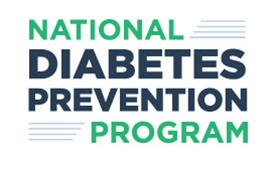
Chronic Disease Prevention
Could you be at risk for prediabetes?
KNOW YOUR RISK!
The only way to know if you are on the road to Type 2 Diabetes is to get tested. Testing is simple, and you can usually get the results quickly. Why is it important to know your risk? Because having diabetes can lead to serious health problems throughout your body, including your risk of:
- cardiovascular disease that can lead to heart disease or stroke
- nerve damage resulting in discomfort and possible eventual amputation of fingers, toes or limbs; digestive system issues with nausea, vomiting, diarrhea or constipation; and, in men, erectile dysfunction
- kidney damage leading to problems filtering waste from your blood with severe damage leading to kidney failure or end-stage kidney disease, which may require dialysis or a kidney transplant
- eye damage such as cataracts, glaucoma and damage to the retina, potentially leading to blindness
- foot damage due to poor blood flow or nerve issues that can result in serious infections that heal poorly and may ultimately require amputations
- skin conditions such as bacterial and fungal infections
- hearing problems, which are more common in people with diabetes
- dementia such as Alzheimer’s disease
- depression, which is more common in people with diabetes and can have the additional problem of negatively affecting how well you manage your diabetes
Test Types:
- A1C Test: Measures your average blood sugar level over the past 2 – 3 months through a finger stick or blood draw. You do not have to fast (not eat for a certain number of hours beforehand).
- Fasting Blood Sugar Test: Measures your blood sugar after an you haven’t eaten for at least 8 hours, through a finger stick or blood draw.
- Glucose Tolerance Test: Measures your blood sugar before and after you drink a liquid containing glucose. This test is done after you fast overnight before the test and after drinking the liquid, through a finger stick or blood draw at 1 hour, 2 hours, and possibly 3 hours afterward.
National Diabetes Prevention Program
Wicomico County Health Department’s Diabetes Prevention Program is an evidenced based program developed by the Centers for Disease Control and Prevention. It is a lifestyle change program for preventing type 2 diabetes.
- It can help people cut their risk of developing Type 2 Diabetes in half.
- The Diabetes Prevention Program research study showed that making modest behavior changes helped participants lose 5% to 7% of their body weight (that would be 10 to 14 pounds for a 200-pound person).
- These lifestyle changes reduced the risk of developing type 2 diabetes by 58% in people with prediabetes.
- Participants work with a lifestyle coach in a group setting to receive a 1-year lifestyle change program that includes 16 core sessions (usually 1 per week) and 6 post-core sessions (1 per month).
- Participants learn how to eat more healthily and decrease the fat in their dietary intake.
- Participants are also coached to increase their physical activity.
- Tracking food intake and monitoring activity are important components of the program.
For more information or to see if you are eligible, call (410) 334-3480. To register for the program, click here.

